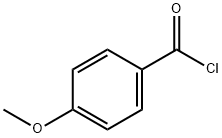4-Isopropoxylphenylboronic acid
Synonym(s):4-(1-Methylethoxy)phenylboronic acid;4-Isopropoxybenzeneboronic acid;4-Isopropyloxyphenylboronic acid
- CAS NO.:153624-46-5
- Empirical Formula: C9H13BO3
- Molecular Weight: 180.01
- MDL number: MFCD03427051
- SAFETY DATA SHEET (SDS)
- Update Date: 2024-08-02 20:38:39

What is 4-Isopropoxylphenylboronic acid?
Chemical properties
White to off-white or light tan powder
The Uses of 4-Isopropoxylphenylboronic acid
Reactant for:• ;Microwave-mediated click-chemistry synthesis of glyco-porphyrin derivatives with in vitro photo-cytotoxicity for application in photodynamic therapy1• ;Palladium-catalyzed oxidative cross-coupling reactions2• ;Ruthenium-catalyzed hydrogenation reactions3• ;Stereoselective rhodium-catalyzed arylation4• ;Palladium acetate catalyzed C-glycosidation5
The Uses of 4-Isopropoxylphenylboronic acid
suzuki reaction
The Uses of 4-Isopropoxylphenylboronic acid
4-Isopropoxyphenylboronic Acid is used to synthesize potent cytotoxic analogues of the marine alkaloid Lamellarin D. It is also used to synthesize cyclooxygenase-2 (COX-2) inhibitors.
General Description
Contains varying amounts of anhydride
Properties of 4-Isopropoxylphenylboronic acid
| Melting point: | 150-154°C |
| Boiling point: | 321.9±44.0 °C(Predicted) |
| Density | 1.10±0.1 g/cm3(Predicted) |
| storage temp. | Keep in dark place,Sealed in dry,Room Temperature |
| solubility | DMSO (Slightly), Methanol (Slightly) |
| form | Powder |
| pka | 8.78±0.17(Predicted) |
| color | White to off-white or light tan |
| CAS DataBase Reference | 153624-46-5(CAS DataBase Reference) |
Safety information for 4-Isopropoxylphenylboronic acid
| Signal word | Warning |
| Pictogram(s) |
 Exclamation Mark Irritant GHS07 |
| GHS Hazard Statements |
H315:Skin corrosion/irritation H319:Serious eye damage/eye irritation H335:Specific target organ toxicity, single exposure;Respiratory tract irritation |
| Precautionary Statement Codes |
P261:Avoid breathing dust/fume/gas/mist/vapours/spray. P304+P340:IF INHALED: Remove victim to fresh air and Keep at rest in a position comfortable for breathing. P305+P351+P338:IF IN EYES: Rinse cautiously with water for several minutes. Remove contact lenses, if present and easy to do. Continuerinsing. P405:Store locked up. |
Computed Descriptors for 4-Isopropoxylphenylboronic acid
New Products
Tert-butyl bis(2-chloroethyl)carbamate 4-Methylphenylacetic acid N-Boc-D-alaninol N-BOC-D/L-ALANINOL 3-Morpholino-1-(4-nitrophenyl)-5,6-dihydropyridin- 2(1H)-one Furan-2,5-Dicarboxylic Acid Tropic acid DIETHYL AMINOMALONATE HYDROCHLORIDE 1,1’-CARBONYLDIIMIDAZOLE R-2-BENZYLOXY PROPIONIC ACID 1,1’-CARBONYLDI (1,2-4 TRIAZOLE) N-METHYL INDAZOLE-3-CARBOXYLIC ACID (2-Hydroxyphenyl)acetonitrile 4-Bromopyrazole 5-BROMO-2CYANO PYRIDINE 5,6-Dimethoxyindanone 5-broMo-2-chloro-N-cyclopentylpyriMidin-4-aMine 2-(Cyanocyclohexyl)acetic acid 4-methoxy-3,5-dinitropyridine 2-aminopropyl benzoate hydrochloride 1-(4-(aminomethyl)benzyl)urea hydrochloride diethyl 2-(2-((tertbutoxycarbonyl)amino) ethyl)malonate tert-butyl 4- (ureidomethyl)benzylcarbamate Ethyl-2-chloro((4-methoxyphenyl)hydrazono)acetateRelated products of tetrahydrofuran








You may like
-
 4-Isopropoxyphenylboronic Acid (contains varying amounts of Anhydride) CAS 153624-46-5View Details
4-Isopropoxyphenylboronic Acid (contains varying amounts of Anhydride) CAS 153624-46-5View Details
153624-46-5 -
 4-ISOPROPOXYPHENYLBORONIC ACID CAS 153624-46-5View Details
4-ISOPROPOXYPHENYLBORONIC ACID CAS 153624-46-5View Details
153624-46-5 -
 1975-50-4 98%View Details
1975-50-4 98%View Details
1975-50-4 -
 2-HYDROXY BENZYL ALCOHOL 98%View Details
2-HYDROXY BENZYL ALCOHOL 98%View Details
90-01-7 -
 2-Chloro-1,3-Bis(Dimethylamino)Trimethinium Hexafluorophosphate 221615-75-4 98%View Details
2-Chloro-1,3-Bis(Dimethylamino)Trimethinium Hexafluorophosphate 221615-75-4 98%View Details
221615-75-4 -
 14714-50-2 (2-Hydroxyphenyl)acetonitrile 98+View Details
14714-50-2 (2-Hydroxyphenyl)acetonitrile 98+View Details
14714-50-2 -
 118753-70-1 98+View Details
118753-70-1 98+View Details
118753-70-1 -
 733039-20-8 5-broMo-2-chloro-N-cyclopentylpyriMidin-4-aMine 98+View Details
733039-20-8 5-broMo-2-chloro-N-cyclopentylpyriMidin-4-aMine 98+View Details
733039-20-8
Statement: All products displayed on this website are only used for non medical purposes such as industrial applications or scientific research, and cannot be used for clinical diagnosis or treatment of humans or animals. They are not medicinal or edible.